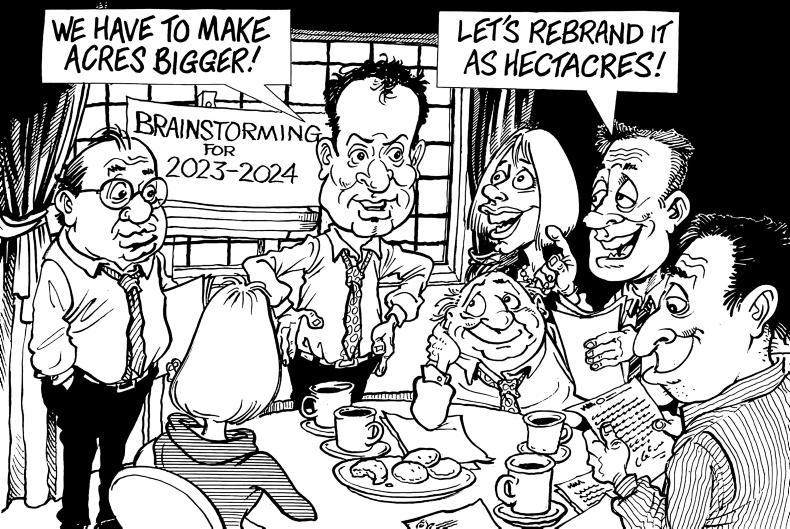The more farming changes the more it stays the same. The new CAP promised big on reducing red tape and less bureaucracy. The reality is the new CAP formally starting next week, for the next five years, has more red tape than any previous CAP. Did the officials in Brussels just decide to ignore what EU farmers were saying?
They must have, because the clear message was sent up the line to keep it simple to understand. They ignored the pleas and, what’s more, they have gone to town with changes. Starting now, the old single farm payment will be split into three parts called the BISS (the main payment), the eco-scheme payment (the environment part) and the CRISS payment (front-loading on smaller land plots).
The other part that is not visible, but which is at play in the background, is called convergence and this influences the BISS payment. This essentially brings all payments closer to the national average.
It means high-value entitlements come down and lower-value entitlements get brought up towards the average payment.
The eco-schemes element is new for all farmers and most farmers will qualify for this part of the payment with the space for nature element on their farm. Space for nature is the part of the farm that has hedgerows, trees, scrub, etc (in other words, habitats). The Department has this measured from the eye in the sky. Every farmer can check the space for nature percentage of their farm on agfood.ie.
It is important to check that the aerial maps tally with what the reality on the ground. This all takes time and you don’t want to be doing this coming up to a deadline.
Changes
One of the more significant changes is you don’t need entitlements on eligible hectares to get the eco-scheme payment or the CRISS payment. This brings the question up for some leased land as to who keeps the eco-scheme payment?
The theory is this part should belong to the farmer taking the risk and farming the land. They have to maintain certain conditions like maintaining space for nature, soil sampling or planting a break crop. Some landowners will argue this belongs to them, no doubt.
Leasing
If you are leasing land and a specified amount of money is stated in the lease agreement to be returned to the landowner each year, that could be a problem if the EU payment has reduced because of the changes above.

We learned from some Teagasc analysis published two weeks ago that those farmers producing most of the output are losing under the new CAP reform. While farmers can’t do anything about it now, it will clearly mean those larger commercial suckler enterprises in the east who are dependent on CAP for most of their family farm income will struggle to stay doing it.
Other changes
The most significant change to be eligible for the Area of Natural Constraint (ANC) payment is the introduction of the “active farmer” definition. For most, this will be satisfied by a minimum stocking rate but crop production or maintaining lands that will deliver an environmental good will also suffice. We are awaiting more information as to what is deemed as delivering as environmental good.
Plan needed
All of the above points to long waiting times for private consultants and advisers from early February. Make one new year’s resolution to sit down early with your adviser so they can explain some of the changes to you and give everyone a chance before the May submission deadline. As soon as calving, lambing or field work starts, it gets harder to leave the yard, and inevitably you are more tired.
We have had five meetings as part of a roadshow around the country so far to inform farmers of these upcoming changes. We have two more planned for 17 January in Mullingar and 31 January in Mayo.






 This is a subscriber-only article
This is a subscriber-only article










SHARING OPTIONS: